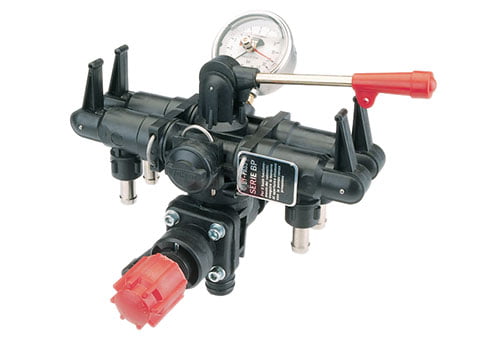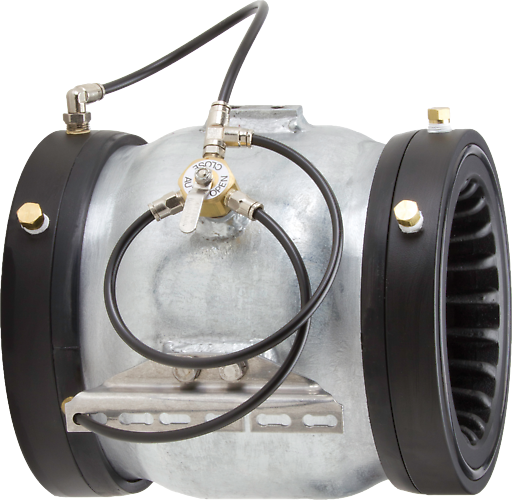Understanding the Importance of Control Valves in Process Automation
Wiki Article

Maximize Power Financial Savings and Comfort With Advanced Building Automation Controls
In the realm of modern-day architecture and center management, the combination of advanced structure automation regulates stands as an essential development. The convergence of modern technology and sustainability has actually birthed a brand-new period where energy effectiveness, comfort optimization, and operational streamlining are no more possible facts however remote desires. By taking advantage of the power of automation, structures can adjust, respond, and progress in means that were as soon as unthinkable. The capacity for substantial power cost savings and improved comfort is not simply a promise yet a possibility waiting to be fulfilled. This standard shift in building monitoring holds the crucial to unlocking a world where environmental conscientiousness and occupant health harmoniously exist side-by-side within the walls of our structures.Energy Efficiency Conveniences
Power effectiveness benefits can dramatically reduce power intake and operational expenses in buildings. Energy-efficient systems, such as sophisticated structure automation controls, can enhance the use of resources like cooling, illumination, and heating, leading to lower energy costs over time.Additionally, improved power effectiveness can lengthen the life expectancy of structure devices and systems. By running a lot more successfully, a/c systems, lighting fixture, and other building components experience much less deterioration, resulting in minimized upkeep and replacement prices. In addition, energy-efficient structures frequently command higher residential property worths and rental prices, providing lasting financial advantages to proprietors.
Moreover, energy effectiveness can enhance owner convenience and productivity. Properly regulated interior environments with ideal illumination and thermal problems develop a more enjoyable and helpful work area, causing enhanced staff member complete satisfaction and efficiency. Overall, the power effectiveness advantages related to sophisticated structure automation controls are complex, including expense savings, environmental stewardship, and occupant health.
Boosted Convenience Control
Enhancing comfort control in structure atmospheres calls for an advanced assimilation of advanced automation systems for optimum resident well-being. By making use of sophisticated building automation controls, centers can customize the indoor environment to meet the particular requirements and preferences of owners. control valves.By integrating these advanced controls, structures can not only boost convenience yet likewise improve energy effectiveness by maximizing system procedures based on actual occupancy and usage patterns. Inevitably, focusing on owner comfort with innovative automation systems leads to a more satisfying and healthier indoor setting.
Operational Effectiveness Improvements

Additionally, the implementation of real-time monitoring and analytics tools enables structure drivers to identify energy inefficiencies and operational anomalies immediately. By continually checking power usage patterns and system performance metrics, changes can be made in real-time to maximize power consumption and make certain peak functional performance. control valves. Additionally, incorporating demand feedback strategies into structure automation controls can even more enhance operational efficiency by dynamically changing energy use based upon grid problems and pricing signals
Indoor Environment Optimization
Effective indoor environment optimization is an essential element of building automation controls, guaranteeing passengers' convenience and well-being while making the most of energy savings. By making use of advanced sensors and controls, building automation systems can continually change and monitor temperature level, humidity degrees, air top quality, and air flow to develop an optimum interior atmosphere. Maintaining comfy and consistent conditions not just enhances resident complete satisfaction however also boosts performance and overall wellness.Indoor environment optimization additionally plays an essential role in energy efficiency. By fine-tuning ventilation, air conditioning, and heating systems based on real-time data and occupancy patterns, constructing automation controls can substantially reduce energy usage - control valves. For example, executing methods such as demand-controlled ventilation and thermal zoning can assist reduce power waste while making sure that each location of the structure receives the necessary conditioning.

Sustainable Setting Production
Structure automation controls not only optimize interior climate problems for energy effectiveness and passenger convenience but additionally lay the structure for creating a sustainable atmosphere via tactical management of resources and systems. By integrating advanced building automation modern technologies, such as sensors, actuators, and intelligent software program, centers can keep an eye on and change power use in real-time to reduce waste and decrease their carbon impact. These systems allow anticipating maintenance, identifying prospective problems prior to they escalate and optimizing equipment efficiency to boost durability and efficiency.Furthermore, sustainable setting production expands past energy administration to incorporate water preservation, waste decrease, and indoor air quality renovation. Building automation controls can regulate water use, find leakages, and guarantee correct waste disposal techniques, go to this website adding to overall sustainability initiatives. In addition, by controlling and keeping an eye on ventilation and filtration systems, these innovations enhance owner health and wellness and performance while decreasing power intake related to a/c operations.
Verdict
To conclude, advanced building automation manages deal substantial benefits in terms of power financial savings, convenience control, functional efficiency, interior climate optimization, and producing a sustainable atmosphere. By carrying out these controls, structures can attain ideal performance while decreasing power usage and improving passenger convenience. It is noticeable that using sophisticated automation technology is essential in boosting structure efficiency and developing a much more sustainable future.Energy efficiency advantages can substantially decrease energy consumption and operational prices in buildings. Overall, the power efficiency advantages connected with advanced building automation controls are diverse, incorporating cost savings, environmental stewardship, and resident health.
In addition, integrating need feedback techniques right into building automation controls can even more enhance functional performance by dynamically adjusting energy usage based on grid problems and rates signals.
Building automation controls not only maximize interior environment problems for power effectiveness and passenger comfort however likewise lay the foundation for creating navigate to this website a sustainable environment through tactical management of sources and systems.In final thought, progressed building automation regulates offer considerable advantages in terms of power cost savings, convenience control, operational performance, indoor environment optimization, and producing a sustainable atmosphere.
Report this wiki page